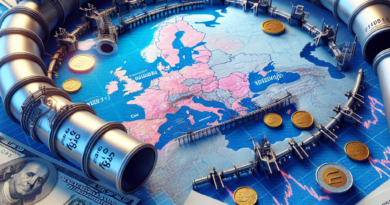Will everything change for gas, oil, coal from 2030? What the IEA says
Fossil fuels under the lens of the IEA (International Energy Agency): gas, oil and coal are about to reach peak demand, with 2030 marking a turning point for the energy sector.
This is what the international body predicts in its latest report, according to which more and more electric cars will hit the roads, while the Chinese economy will grow more slowly and move towards cleaner energy.
The document, in reality, contrasts with the point of view of the group of oil producers, OPEC, which sees demand for oil increasing significantly after 2030, thus pushing for costly new investments in the oil sector.
The great economic, industrial, commercial and ecological challenge of these years is precisely the energy one.
For this reason, the topic is delicate and complex and not without divergent opinions – and business interests.
At stake is a revolution in a crucial sector, that of energy sources and raw materials, which is undergoing shocks and epochal changes.
The AIE report is placed in this context of profound changes.
Are gas, oil, coal really "their years numbered"? What can happen in 2030.
2030 will be the turning point for gas, oil and coal.
The IEA prophecy We talk about raw materials necessary for the energy sector and, obviously, about the transition to renewable sources in the IEA document.
The underlying belief is the one summarized by IEA Executive Director Fatih Birol.
“The transition to clean energy is happening around the world and it is unstoppable.
It's not a question of 'if', it's just a question of 'how soon' – and the sooner the better for all of us.” There is also a transformative shift underway in the way the planet is powered, with the "phenomenal growth of clean energy technologies" such as wind, solar, heat pumps and electric cars playing a crucial role, according to a statement accompanying the World Energy Outlook 2023 report.
Specifically, by 2030, the IEA predicts there will be almost 10 times more electric cars on the world's roads and cited policies to support clean energy in key markets as a burden on future demand for fossil fuels.
For example, the change should be visible and important at least in about 10 years.
The forecast is that 50% of new car registrations in the United States will be electric in 2030, up from the 12% predicted two years ago, largely thanks to economic support from the US Inflation Reduction Act.
The IEA also believes that China's role as a key source of energy demand growth is changing.
While the dragon has accounted for nearly two-thirds of the increase in global oil consumption over the past decade, the momentum behind its economic growth is waning and the country is a “clean energy power,” the report said, adding that more of half of electric cars sold in 2022 occurred in China.
Gas revolution, also for Europe: what will happen? The specific gas sector is in the spotlight considering the epochal change in routes, supplies and use underway.
And Europe is very involved in this area.
Global demand for natural gas will be even lower than forecast until 2040 by the IEA, as renewable energy will occupy a larger share of the energy mix, while the market share of Russian gas is set to decline.
For the fourth consecutive year, gas consumption projections have been lowered.
Europe has cut demand after Russia sharply reduced pipeline flows to the region last year.
Meanwhile, the United States and Qatar are increasing supplies of liquefied natural gas, helping to keep markets well-supplied.
The IEA now expects gas demand to peak under all scenarios by 2030, with “little scope remaining for pipeline or LNG trade to grow beyond that date”.
What is happening to the gas sector is a true revolution.
The drop in consumption and the total disruption in European supply is accompanied by the uncertain demand from China.
Furthermore, LNG and not natural gas is taking over, sidelining Russia's role as an exporter.
There are very limited opportunities for Russia to secure additional markets.
The country's share of internationally traded gas, which stood at 30% in 2021, is expected to halve by the end of the decade in the agency's baseline scenario.
As a result, Russia's push into Asia will also face “major difficulties,” according to the IEA.
Earlier this month, Russian gas giant Gazprom PJSC said it expects pipeline flows to China at levels similar to its historical shipments to Western Europe in the near future.
The European Union's push for renewable energy – along with gas savings by industries and households – contributed to the region's record reduction last year, when its consumption fell by 55 billion cubic meters.
However, European companies rely on long-term LNG contracts to increase energy security, even as they seek to reduce greenhouse gas emissions.
Three majors – TotalEnergies SE, Shell Plc and Eni SpA – concluded 27-year gas deals with Qatar this month, with supplies to France, the Netherlands and Italy expected beyond 2050.
This may slow the transition's green revolution .
Why there's a fossil fuel scare The IEA also said that, as things stand, demand for fossil fuels is likely to remain too high to meet the Paris Agreement's goal of limiting temperature rise global average at 1.5 degrees Celsius.
“This risks not only worsening climate impacts after a year of record heat, but also undermining the security of the energy system, which was built for a cooler world with less extreme weather events,” the agency said in a Note.




